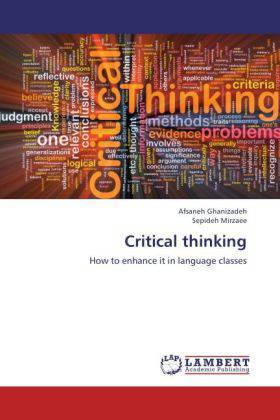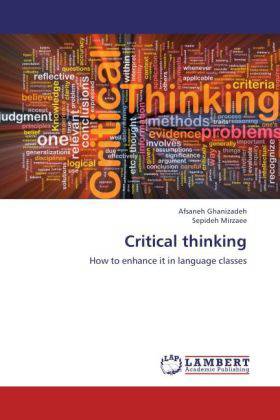
- Afhalen na 1 uur in een winkel met voorraad
- Gratis thuislevering in België vanaf € 30
- Ruim aanbod met 7 miljoen producten
- Afhalen na 1 uur in een winkel met voorraad
- Gratis thuislevering in België vanaf € 30
- Ruim aanbod met 7 miljoen producten
Zoeken
Critical Thinking
How to enhance it in language classes
Afsaneh Ghanizadeh, Sepideh Mirzaee
Paperback | Engels
€ 67,45
+ 134 punten
Omschrijving
The present book has been designed in two sections. The first section presents a brief overview on critical thinking (CT). In particular, we provide you with a concise but clear introduction to CT, rationale of its teaching, its role in education, its status in L2-related studies, some online discussions and its propositions. In the second section, several techniques and strategies for promoting critical thinking in language classes are proposed. The authors of the present book selected these techniques based on the existing literature and models of critical thinking, the authors' extensive studies and publications on critical thinking, as well as their practical experience in language classes. These techniques comprise: concept mapping, critical discourse analysis, argumentation, emotion regulation practices, and reflective journals. In five chapters, we first introduce these techniques in sequence, and then we present our recommended procedure on how to integrate each of these programs into language classes. These step-by-step and accessible procedures are hoped to equip language learners with essential skills required to think critically.
Specificaties
Betrokkenen
- Auteur(s):
- Uitgeverij:
Inhoud
- Aantal bladzijden:
- 180
- Taal:
- Engels
Eigenschappen
- Productcode (EAN):
- 9783659233166
- Verschijningsdatum:
- 3/09/2012
- Uitvoering:
- Paperback
- Formaat:
- Trade paperback (VS)
- Afmetingen:
- 152 mm x 229 mm
- Gewicht:
- 272 g

Alleen bij Standaard Boekhandel
+ 134 punten op je klantenkaart van Standaard Boekhandel
Beoordelingen
We publiceren alleen reviews die voldoen aan de voorwaarden voor reviews. Bekijk onze voorwaarden voor reviews.











